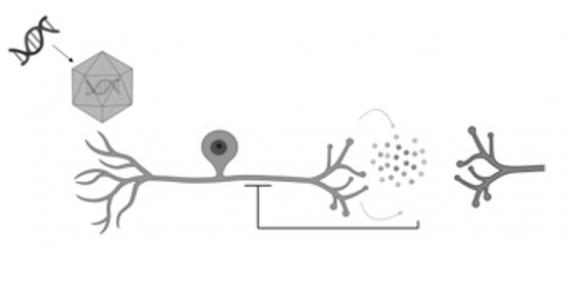Section:

KEYWORDS
- Gene Therapy
- Regulated Drug Release
- Bioactive Peptides
- Chronic Pain
- Epilepsy
A gene therapy strategy for controlled biopharmaceutical drug release
The proposed invention is an innovative biopharmaceutical drug able to i) be delivered in form of its nucleotidic sequence to target cells; ii) be released as functional and active peptide; iii) modulate its own release and action by inhibiting the cells that released it. The unique combination of these aspects, fundamental for the proposed invention, are not challenged, anticipated or addressed by the patents highlighted through prior art research. Furthermore, the proposed invention has been validated in vitro, ex vivo and in vivo, providing solid results lacking in the aforementioned patents.
Many neurological disorders such as chronic pain and epilepsy are characterized by sustained, high frequency neuronal firing. Current treatments such as antiepileptic drugs or opioids which reduce this firing often display poor efficacy and cause severe side effects. Here we propose a novel and innovative strategy to treat these diseases based upon a gene therapy approach that renders biologic drugs releasable from neurons upon sustained stimulation.
To achieve this, we reasoned that expanding the pool of molecules that neurons secrete would substantially impact such disorders. Therefore, we engineered a biopharmaceutical compound to act as a neuropeptide, so that neurons would secrete it in a controlled fashion.
ADVANTAGES
This molecular tool represents a highly adaptable technology that could be applied to a huge variety of potential therapies. Most importantly,
- represents a self-regulating gene therapy approach to modulate sustained neuronal activity
- offers several safety switches, enhancing substantially safety profile compared to traditional approaches
- the sequence, not the peptide, is delivered, allowing for sustained administration from a single subcutaneous injection
- low-frequency (non-painful) stimuli will not cause its release, thus reducing off-target events or side effects
- represents a self-regulating biopharmaceutical
INVENTORS: Paul Heppenstall, Denise Ferrarini
PATENT PRIORITY NR. IT 102025000000441


